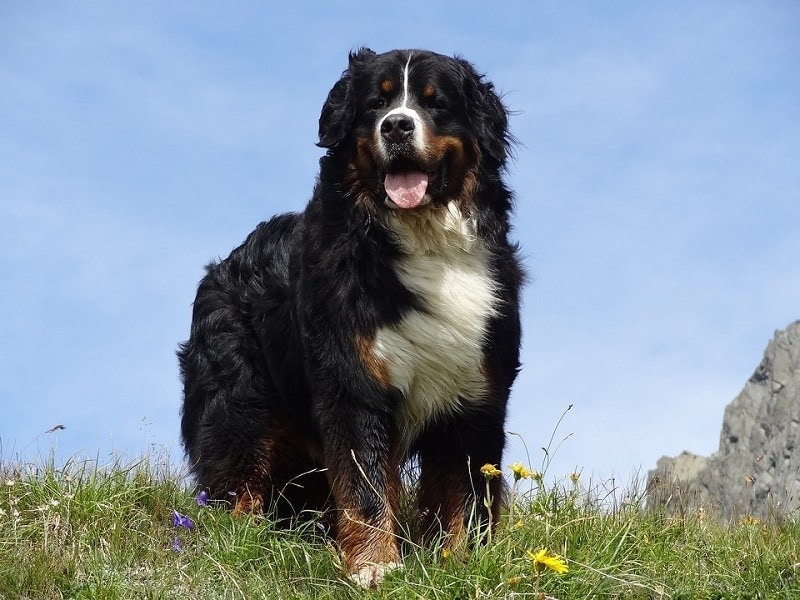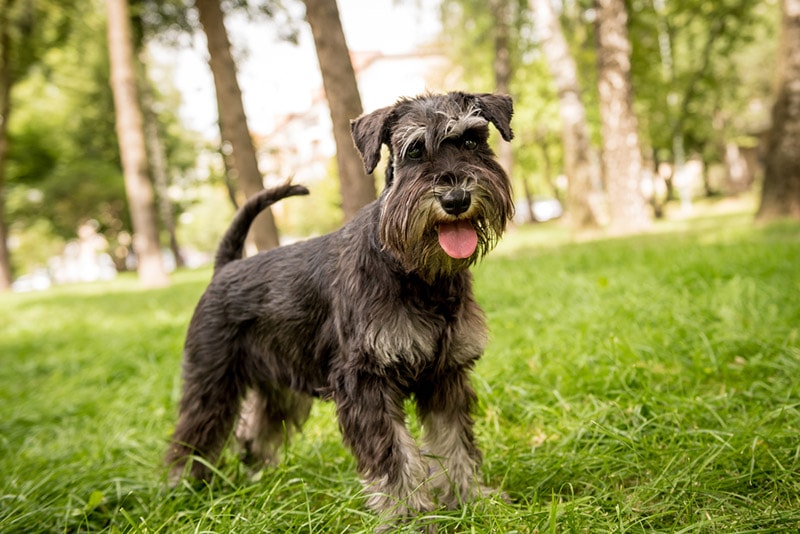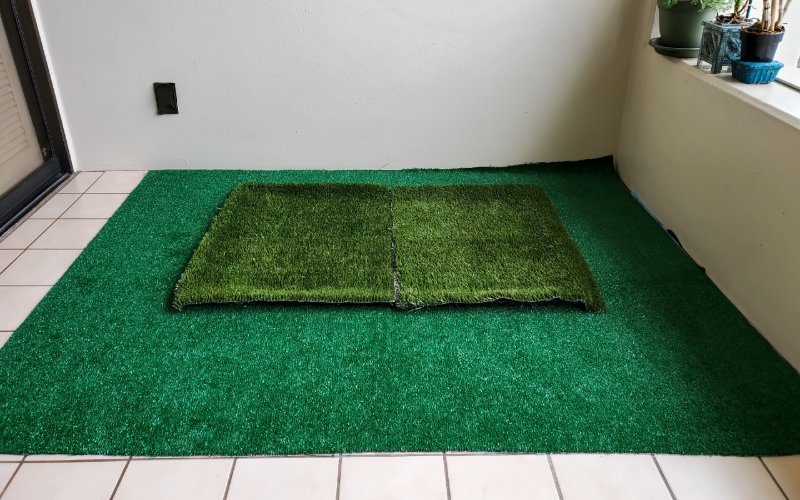Abyssinian Sand Terrier Dog Breed Info: Pictures, Personality & Facts

Updated on
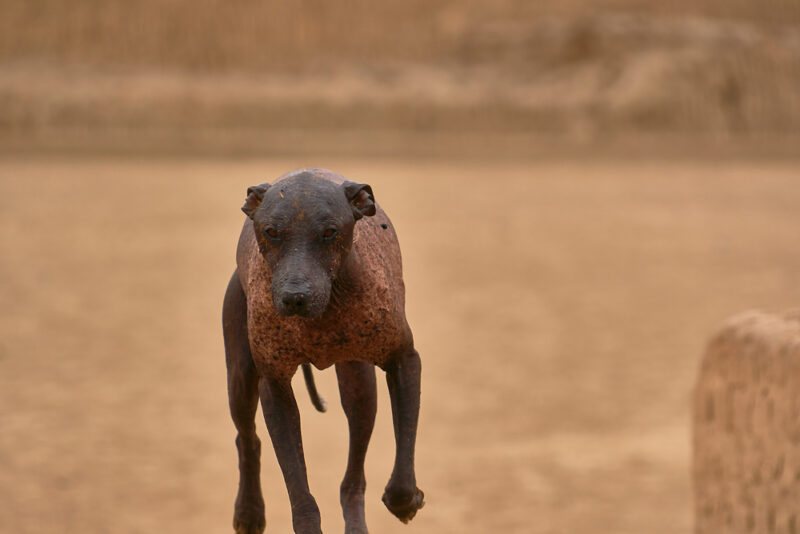
Click to Skip Ahead
Dog parents love Terriers: Bostons, Westies, and Yorkshires have been America’s sweethearts for decades. But what about the Abyssinian Sand Terriers, though? This is an ancient breed from Africa with almost no hair and grayish skin. To most canine fans in the US, these buds are a mystery. However, Abyssinians are extremely loyal, affectionate, fearless, and protective of their owners. So, if you’re longing for a valiant, obedient guardian, this doggo might be it for you
| Height: | 15–21 inches |
| Weight: | 20–40 pounds |
| Lifespan: | 12–16 years |
| Colors: |
Black, elephant gray, grayish black, bronze, pale sandy, marked with spots
|
| Suitable for: | Singles, seniors, and families with adult kids |
| Temperament: | Loyal, courageous, loving, curious, docile, protective, a bit stubborn |
Often called the African Hairless Dogs, Abyssinians take a bit more time to adapt to new environments and warm up to their pet parents. However, once they find a new home and family, they are ready to protect them with everything they have. Sand Terriers are also very friendly and happy to fool around with other pets. Plus, they take little effort in grooming. Abyssinian Sand Terriers are extremely rare, though. So, how do you train an Abyssinian? What kind of food does it like? We have the answers!
Abyssinian Sand Terrier Characteristics
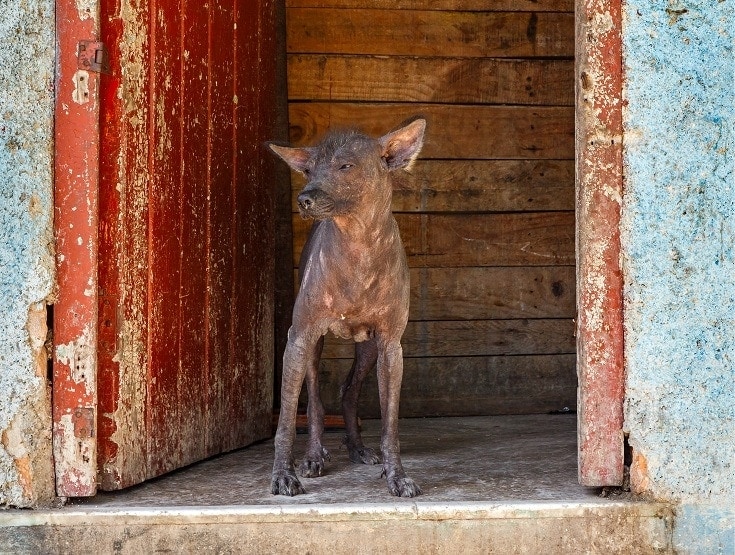
Abyssinian Sand Terrier Puppies
Cheerful, inquisitive, and energetic—that’s the best way to describe Abyssinian pups. They aren’t afraid to show their emotions and gladly bond with humans. So, if you adopt an Abyssinian Sand Terrier at a young age, don’t hesitate to be affectionate and encouraging with it. Treat the pooch right, and that will be the start of a beautiful friendship. On the downside, it won’t be at all easy to find an Abyssinian puppy in the US.
Some experts even believe that there aren’t any purebred African Hairless Dogs left anymore. You could, of course, try some local shelters, rescue organizations, and breeders, but that probably won’t get you anywhere. Instead, much like Brazilian Mastiffs, these exotic pets mostly live in their homeland. For Abyssinians, that’s West Africa. Even then, it will take time to find a puppy, and it won’t be cheap. Please keep this in mind when “hunting” for a Sand Terrier pup.
Temperament & Intelligence of the Abyssinian Sand Terrier 🧠
Loyalty is something that runs deeply in any Terrier’s blood, and the African Hairless Dog is no exception to that rule. It’s brave, bold, and highly protective of its family members. And, while it’s not the biggest doggo out there, this champ is strong enough to take down stray dogs, human burglars, and other threats. But most of the time, Abyssinian Sand Terriers are docile and tranquil.
They like being around people they trust and don’t mind getting cozied up on the couch. Intelligence is another thing that this breed has plenty of. Potty training, obedience training, and basic commands like “Sit”, “Stay”, and “Follow” come easy for it. Sometimes, Abyssinians can be a bit stubborn, anxious, and even aggressive. But that can be avoided via early socialization. Abyssinian Sand Terriers are great watchdogs, yet not the best guardians (due to their size).
Are These Dogs Good for Families? 🏡
Originally, Abyssinian Sand Terrier Dogs used to be semi-wild animals. Instead of turning into domestic pets and living side-by-side with local farmers and breeders, they preferred to “tag along”. However, Abyssinian Sand Terriers have changed over the years, and today, they’re more than happy to become trusted companions to the right humans. Modern-day Abyssinians are friendly, joyful, and incredibly loyal, despite the somewhat scary looks.
So, if you were a bit hesitant about welcoming such a doggo into your home, we’re happy to say that they make amazing family pets. Another big pro: since these canines have very little hair, they don’t shed. Therefore, people who love dogs yet have severe allergic symptoms (red, itchy eyes, sneezing, and a runny nose) might find these champs to be a great choice. They will still be allergic to their saliva and dander, but the side effect won’t be severe.
What About Little Children?
For the most part, yes, African Hairless Dogs are friendly toward children. They are rather patient and tolerant dogs and won’t lose their temper in the blink of an eye. But, since children can be unpredictable, it’s highly recommended to provide supervision every single time the dog interacts with your kids. It would be best if the Abyssinian Sand Terrier was raised with the kids when it was a pup.
This way, it will see them as family members. Still, no matter how strong the bond is or how docile and obedient the dog might be, leaving it one-on-one with children should always be out of the question. So, only consider adopting it if you have grown kids that know exactly how to play and interact with a Terrier.
Does This Breed Get Along With Other Pets? 🐶 😽
The fact that these dogs come from a foreign country doesn’t mean they’re going to be hostile toward fellow canines. Just like any other dog, the Abyssinian will benefit greatly from early socialization. If you introduce it to new faces every single day while it’s still a pup and invest in obedience training, you’ll be able to turn it into a friendly, sweet-tempered, and stress-free adult. But if you buy a fully grown dog with no social skills, it could be aggressive.
Often, aggression is a sign of fear. And it will take a lot more time and effort to change its behavior. That’s why adopting a puppy is preferred. The Abyssinian Sand Terriers might not be very welcoming to cats and other small creatures (due to a slightly above-average prey drive), but they can have healthy relationships with them if raised properly. With other dogs, you could see some “turf wars”. This can also be fixed via socialization.
Things to Know When Owning an Abyssinian Sand Terrier
Food & Diet Requirements 🦴
Despite their exotic origins, Abyssinian dogs aren’t at all picky when it comes to food. Just like any other doggo, they rely on premium-quality food to grow, build muscles, and stay fit. Always check the ingredients and make sure there are no “fillers”, as they won’t have a high nutritional value. You can feed the pup home-cooked or commercial meals for medium-sized dogs, but to play it safe, talk to a veterinarian first.
And one more thing: while the African Sand Dog might not necessarily be prone to obesity, you should still be conscious about how much food you let it eat. Going over the recommended daily calorie intake will put pressure on the joints, make the dogs weaker, and increase the risk of various medical conditions. Bloat can also become a part of the picture. Control the portions, feed the fur baby 3–4 times a day, and don’t forget to count in the treats.
Exercise 🐕
Abyssinian Sand Terriers are energetic, vigorous buds. You won’t have to spend the better half of the day exercising with them, though. To stay healthy, fit, and happy with their lives, they need approximately 30-45 minutes of activity (or up to an hour). It can be a jog, hike, or bicycle ride (Terriers like that a lot). Fun and intellectual games should be a part of the daily ritual as well.
To burn all that saved-up energy, you can introduce the dog to puzzles, try your hand at Fetch, or go with something a bit more physical like tug-of-war. Leaving the doggo alone for a long time will turn it into a restless beast with a loud bark, destructive tendencies, and anxious behavior. Thankfully, most families should be able to find around 30 minutes to play/exercise with the pup. A quick note: most Abyssinian Sand Terriers can’t bark unless taught to!
Training 🦮
A gentle yet firm hand: that’s the only proper way to train an Abyssinian Sand Terrier. These dogs are very smart and quick to learn; however, they don’t always like to follow the rules. You can steer them in the right direction by being patient, supportive and rewarding good behavior with positive reinforcement. We’re talking about verbal encouragement and tasty snacks. With Abyssinian Sand Terriers, it’s important to bond with the doggo first before establishing yourself as the “leader of the pack”.
Start the training as early as possible. Puppies are usually more trusting and open to learning new moves, tricks, and commands.
Grooming ✂️
This part’s easy: since African Hairless Dogs have little to no hair on their bodies, you won’t have to brush it. But that doesn’t mean you can skip grooming altogether. Terriers only need occasional baths, but moisturizing sessions (to avoid dry skin) should always be a part of the routine. The same goes for brushing the fur baby’s teeth (2–3 times a week or daily), cleaning its ears (weekly/twice a month), and trimming the dog’s nails (once a month or so).
Also, because these pups have no coat, you should always keep a warm sweater ready for the cold days. And how about taking the Abyssinian Sand Terriers to a professional groomer? It might not be the best experience for the dog. It will likely feel uncomfortable when handled by a stranger. Besides, you can use these sessions to get closer to the pet and build a better relationship.
Health and Conditions ❤️
This hardy dog breed has been surviving the unforgiving climate of Western Africa for hundreds, if not thousands of years. And the lack of hair doesn’t make it weak; instead, it helps Abyssinian Sand Terriers handle the heat. Generally speaking, these buds are quite healthy and resilient but can still get sick or infected. Regular vet visits will help keep the doggo healthy. The sooner you detect a disease and treat it, the easier it will be to ensure a speedy recovery.
And here’s a look at the most common health issues (severe and minor) among Abyssinian Sand Terriers:
- Obesity
- Parasites
- Infections
- Dental concerns
- Dysplasia
- Patellar luxation
- Liver shunt
- GDV
- Skin diseases
- Epilepsy
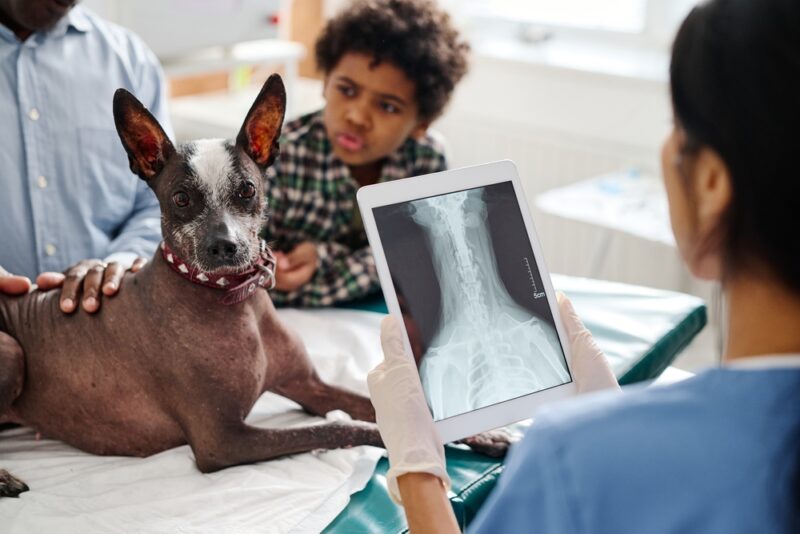
Male vs Female
If you’ve set your eyes on the Abyssinian Sand Terrier yet aren’t 100% sure about the dog’s sex, here are some things to keep in mind. Like most canines, Abyssinian Sand Terriers males are bigger, stronger, and more aggressive. On top of that, they’re less welcoming to strangers, especially when they try to step foot (or, rather, paws) into their territory. You won’t get the same attitude with a female African Sand Dog.
They tend to be more well-mannered, well-tempered, and not as rambunctious. More than that, the ladies aren’t very stubborn and follow commands willingly. Now, male Abyssinians are also quite docile and eager to please, but it will take more training sessions to establish authority over them. That said, every doggo is different, and a female Sand Terrier can be rather feisty, depending on its character.
3 Little-Known Facts About the Abyssinian Sand Terrier
1. In Africa, These Dogs Are Considered Magical Creatures
Abyssinian Sand Terriers are surrounded by a cloud of mystery not only in the US but also in West Africa, where they’re originally from. Many locals believe that these dogs are magical and have healing powers. Well, while that might not necessarily be true, a loyal, affectionate doggo can make the right owner happy, and that is a true superpower. Besides, Abyssinian Sand Terriers do a great job of warming a cold bed or serving as a “compress” for various injuries.
2. Abyssinians Have Almost No Hair on Their Skin
We mostly know this breed as the Abyssinian or African Hairless Dog, but people around the world also call them Egyptian or Zulu dogs. This lets us know that there have been more than a few canines on the African continent over the centuries that didn’t have any hair. According to the AKC, dogs with thick, double coats are more prone to overheating. So, by saying goodbye to the fur, the African breeds managed to survive the heat.
It’s a survival tactic, not a “fashion choice” or the work of human breeders. To be fair, Abyssinians do have a little bit of hair on their bodies (on their heads and tails).
3. The First Sand Terriers in Britain Were Displayed in a Zoo
Up until the 19th century, no Abyssinian Sand Terriers had stepped foot in Europe. That all changed in 1833 when the very first three African Hairless Dogs were exhibited at the London Zoo. Back then, they were known as the Egyptian Hairless Dogs. However, despite their exotic appearance, local dog fans didn’t like Abyssinian Sand Terriers that much. European breeders had a different take on that, though. They used these pups to create brand-new breeds like the Chinese Crested dogs.
Also, it’s very well possible that the African Hairless Dogs gave life to hairless Chihuahuas, Argentine Pile Dogs, and the Xoloitzcuintli.
Final Thoughts
There’s very little not to like about Abyssinian Sand Terriers. If you can get your hands on one (they are among the rarest canine breeds), you’ll be blessed with a faithful, capable, and protective doggo with a beautiful heart. These dogs don’t need you to babysit them or spend big bucks on grooming tools, food, or meds. They put family first and thrive on healthy relationships built on trust and mutual respect. They are docile yet courageous and inquisitive.
Abyssinian Sand Terriers will enjoy every game, exercise, or fun activity you throw their way. Be gentle, though, and go slow, as they can be stubborn. More good news: Abyssinians are low-maintenance dogs. Since they don’t have much hair, you won’t ever have to deal with shedding or blowing. Next, a 40-minute exercise will be enough to keep your furry friend physically and mentally stimulated. The naked skin does require extra care, but that won’t be a nuisance.
Summing up, while Abyssinian Dogs might be the closest thing to an urban legend, they’re very much real. And, if you adopt such a dog, it will quickly turn into the talk of the town!
Featured Image Credit: EMCMONDRAGON, Shutterstock




